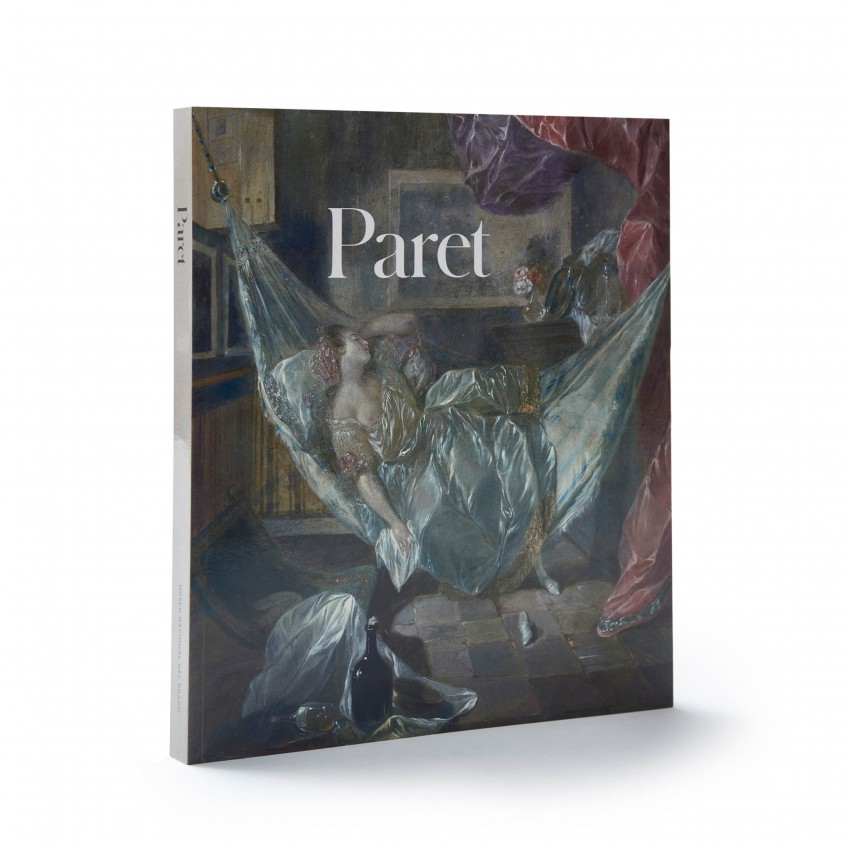Self-portrait of the artist in his studio
1777.Room 093
On the occasion of the 2022 exhibition, a radiograph of this canvas was carried out, and it revealed a Latin inscription in the reverse of the original cloth that was subsequently lined. Even though it is only partially legible, it has been translated as follows: ‘To Luis Gabriel, Paret [illegible] painted his own portrait and as a true token of friendship, [illegible] his homeland bequeathed [illegible] to his fellow countryman L[uis] G[abriel] V de Madrid (?), [illegible] beloved (?) [illegible] in the year of 1777, at the age of 31 years old’. Therefore, there can be no doubt whatsoever of either the identity of the depicted figure or of the year in which it was painted, doubly confirmed by the exact indication of the year and the artist’s age. This would confirm the hypothesis of several authors who situated its production during Paret’s imprisonment in Puerto Rico. On the contrary, the interpretations that associated this work with the shipwreck of San Pedro de Alcántara can be ruled out, since they dated it to around 1786, when the artist was already in Bilbao. Furthermore, infrared reflectography allows us to clearly see the words ‘Mediterranean’ and ‘Granada’ on the map on the table on which Paret leans, confirming that it is a cartographical representation of Spain.
With all this information, the meaning of the work can be determined more accurately. Its traditional association with the depiction of philosophical or intellectual melancholy cannot be ignored, as it has been identified with artists since ancient times. It is depicted through the pensive attitude of the model, his pose – from classical sculptures, and which Paret used similarly in other works, like the image of Thalia amongst the muses that illustrated Quevedo’s El parnaso español, edited by Sancha in 1794 – and the items such as books, a quill, and the tools of his trade scattered across the floor. The subject is also related to mundane melancholy, a consequence of his pitiful personal situation at that time, when he was far away from his homeland and his family and was unable to work on his painting properly.
The aforementioned map is certainly an allusion to his distance from and his longing for his country, and so is the depiction of the shipwreck in the oval canvas behind him, a Spanish merchant vessel that is recognizable by its flag with the Cross of Burgundy or Saint Andrew’s Cross in red on white. The shipwreck, or the ship in a storm, is a metaphorical image of exile that was employed by many poets of Antiquity, such as Alcaeus of Mytilene, Theognis of Megara, and Ovid, and it has also been described as a ‘symbol of estrangement’. Unquestionably, Paret knew classical poetry very well, given the content of his library and his constant display of knowledge in classical languages. Furthermore, the inclusion of two classical busts beside his cape and his hat – outerwear that appears on the floor – may respond to a desire to compare himself with the poets of Antiquity also in this detail. Moreover, the rectangular painting that appears inside the oval and illogically hangs from a cliff might be a metaphor of the disorientation the artist suffered at that time, whereas his being dressed as an elegant majo would refer to the place where he truly belonged: the Spanish court.
Finally, through the representation of his tools on the floor – together with an atlas – he would be indicating the aforesaid difficulties to properly make a living in such a place. As a matter of fact, it should be noted that the only known work by Paret during his stay in Puerto Rico, apart from this one, was another self-portrait (Municipio de San Juan, Museo de San Juan). For that occasion, he was dressed as a jibaro, shortly after arriving to the island, and in a different tone, when he still cherished the hope of returning soon – a feeling that had already become nostalgic and frustrated in this later self-portrait.
As per the inscription on the reverse, Paret sent the canvas to Madrid to someone named Luis Gabriel, who must have been competent in Latin and have had enough knowledge in order to understand the painting’s meaning. The artist probably hoped that the recipient would mediate on his behalf with someone influential with the aim of ending his imprisonment in the island. Evidently, he achieved it, because in May 1778 his sentence in Puerto Rico was commuted to a restraining order of 40 miles from the court and the royal places, thus allowing him to return to Spain and settle in Bilbao.
Albarrán, V. Maurer, G., 'Luis Paret y Alcázar. Autorretrato en estudio' En:. Paret, Madrid, Museo Nacional del Prado, 2022, p.126-129 nº 24
















